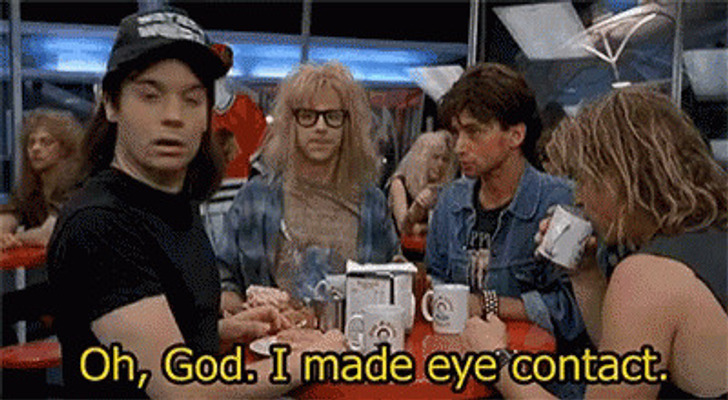How to Overcome a Fear of Eye Contact
If you’re someone who feels uncomfortable and judged when someone looks you in the eyes while talking to you, chances are you have eye contact anxiety. If you’re curious about why this happens and how to overcome it, let 5-Minute Crafts be your guide.
A. What causes this
- A lack of confidence: This could be associated with shyness or maybe the lack of confidence. There may be a sense of discomfort to have conversations in general. Such people tend to avoid the spotlight.
- Social anxiety disorder: Socially anxious people tend to avoid eye contact because it may induce anxiety and discomfort in them. This often triggers the amygdala in the brain that warns them of danger. It keeps them on guard because they have a fear of being judged.
- PTSD: People with PTSD (post-traumatic stress disorder) and CPTSD (complex post-traumatic stress disorder) also become agitated by eye contact. For some people, eye contact is associated with a threat.
B. How to overcome it
1. Reduce eye contact anxiety.
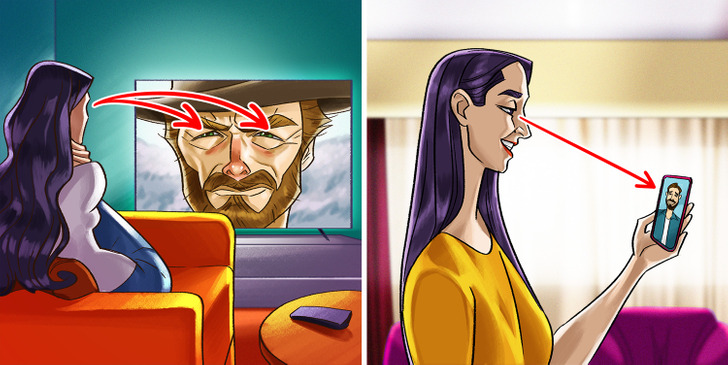
Start small by increasing amounts of eye contact. This will reduce the discomfort and build tolerance for eye contact over time. Practice this with people who make you less anxious by holding eye contact with them. You can also begin making eye contact with actors on TV, videos, and over video chats if real-life eye contact stresses you out in the beginning.
2. Make eye contact in the beginning.

It will be easy when you establish eye contact before talking to someone. Establishing eye contact makes people perceive you as confident and intelligent too.
3. Focus on the areas slightly around the eyes.
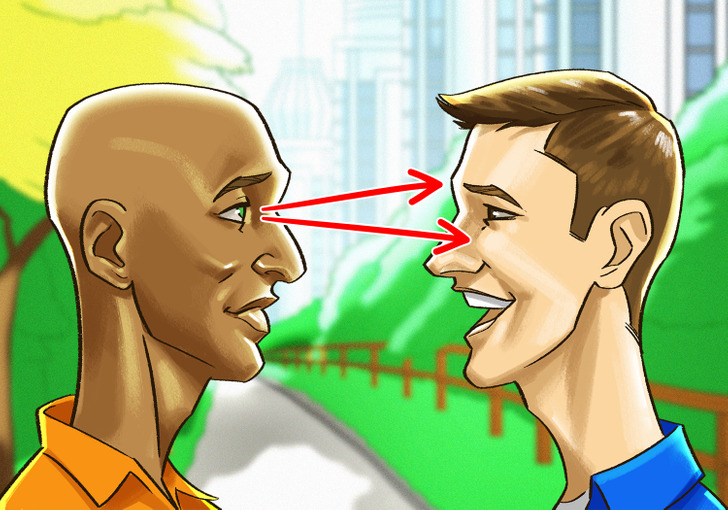
When talking to someone face-to-face, pick a spot between or slightly around the other person’s eyes. If this doesn’t work, you can also try letting your eyes go a bit out of focus. This will help you relax your gaze slightly.
4. Don’t stare too hard.
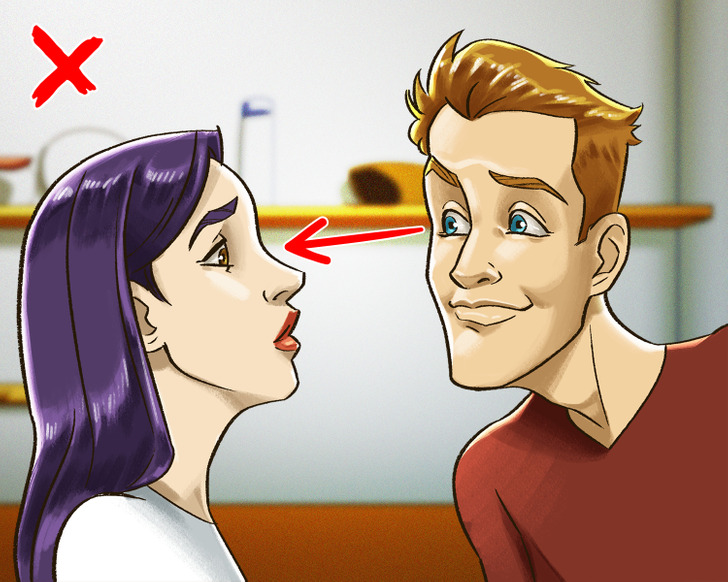
You can also try to look away from time to time. When you look away, do it slowly so that you don’t seem shy or nervous to the other person. And when you stare at someone too intensely, you can make them uncomfortable.
5. Practice the 50-70 rule.
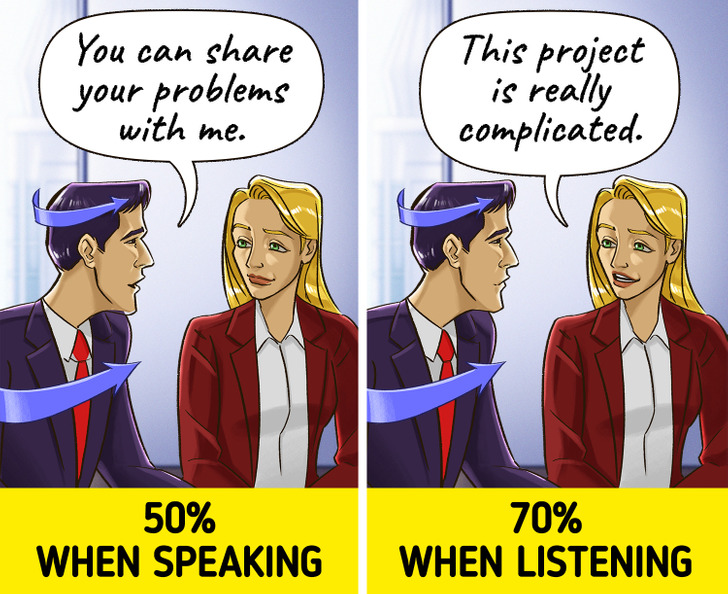
The trick here is to keep eye contact 50% of the time when you’re speaking and 70% of the time when you’re listening to the other person. It’s very common to break the gaze every 4 to 5 seconds. It also depends on the person you’re talking to, so it’s preferable to give them as much eye contact as they give you.
6. Try the triangle technique.
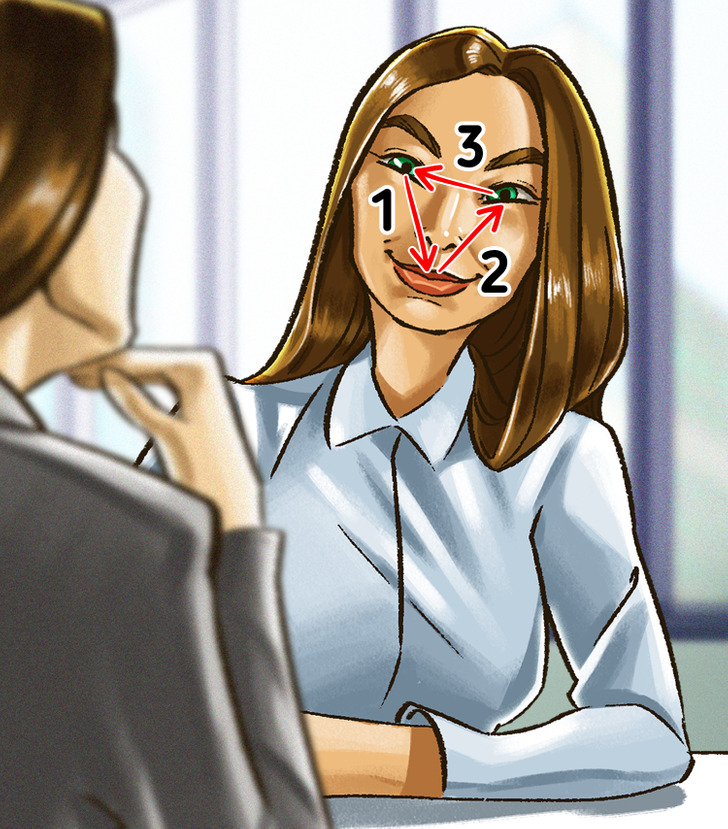
As mentioned above, instead of looking away from the other person or even looking down, you can also focus on another spot on their face. Try imagining an inverted triangle on their face that connects their eyes and mouth. So every 5 seconds, you can keep switching your focus on which point of the triangle you’re looking at.
7. Make a gesture to break the gaze.
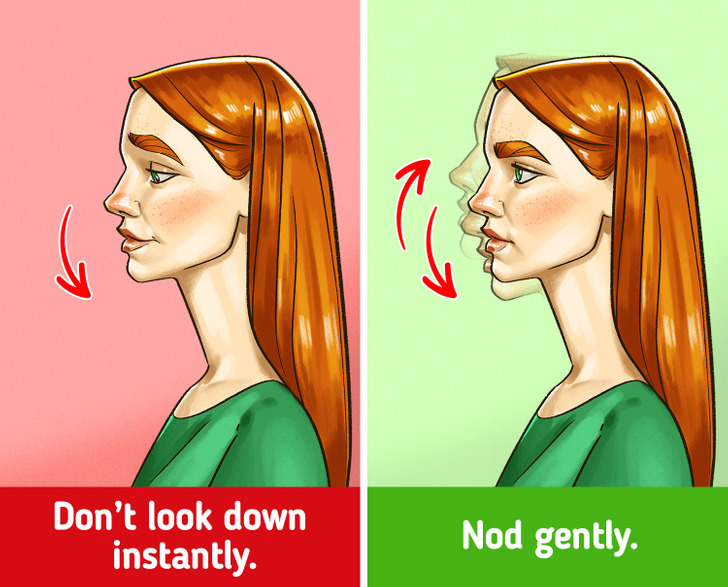
To make a more natural disconnect, you can simply nod or make any gesture. Do this when you begin to feel a bit uncomfortable with the prolonged eye contact.
8. Try therapy.
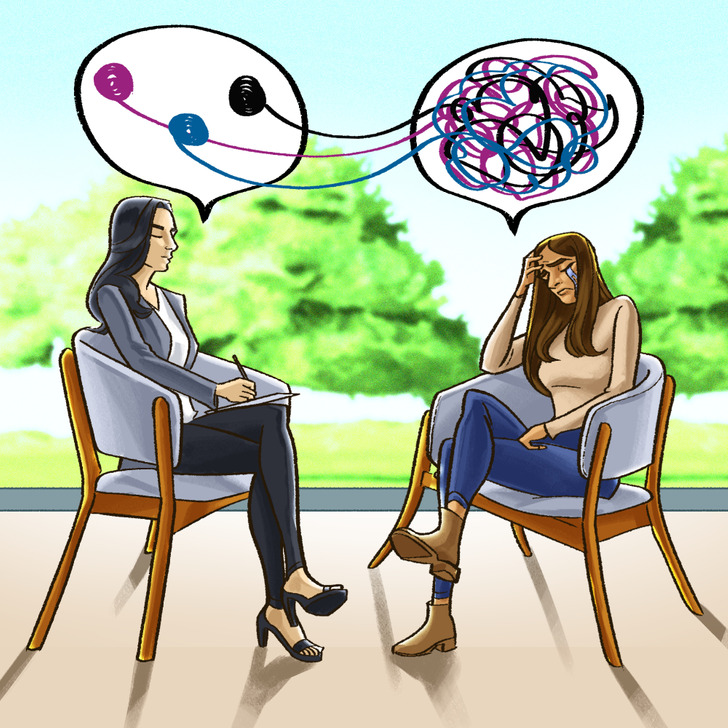
When none of the tips above make you feel comfortable when making eye contact, then consulting a mental health professional would help.
C. When making eye contact in a group or in an interview

When it comes to speaking to a group of people, consider talking to one person in the audience and imagine that you’re talking only to that person at that time. And when you are about to start a new sentence or an idea, select another person in the audience and then make eye contact when finishing the thought. Then keep including as many people from the group as you can.
It’s important to make everyone feel seen by you because you don’t want them to think that they aren’t a part of the conversation. When people feel left out, the group soon divides into multiple parallel conversations. In order to keep it unified, try to keep your eye contact, even among people in a group.
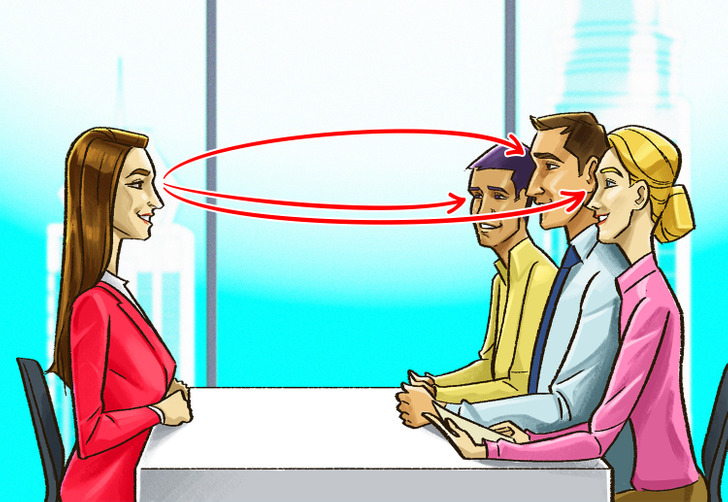
When you have fear of eye contact and have an interview to ace, it can be a bit tricky to deal with. But when you practice eye contact skills, such anxiety can be reduced to an extent. Here’s what you can do:
- When going in for a handshake, make sure to establish immediate eye contact with your interviewer. It helps you seem confident.
- When an interviewer asks you a question, maintain eye contact with them. Make sure to combine it with facial expressions to avoid uncomfortable staring.
- When interviewed by more than one person, keep spreading your attention and eye contact from one interviewer to another, slowly, when you’re answering their questions.
- If you want to emphasize important points that you want your interviewers to remember, you can make intense eye contact with them to appear serious.
